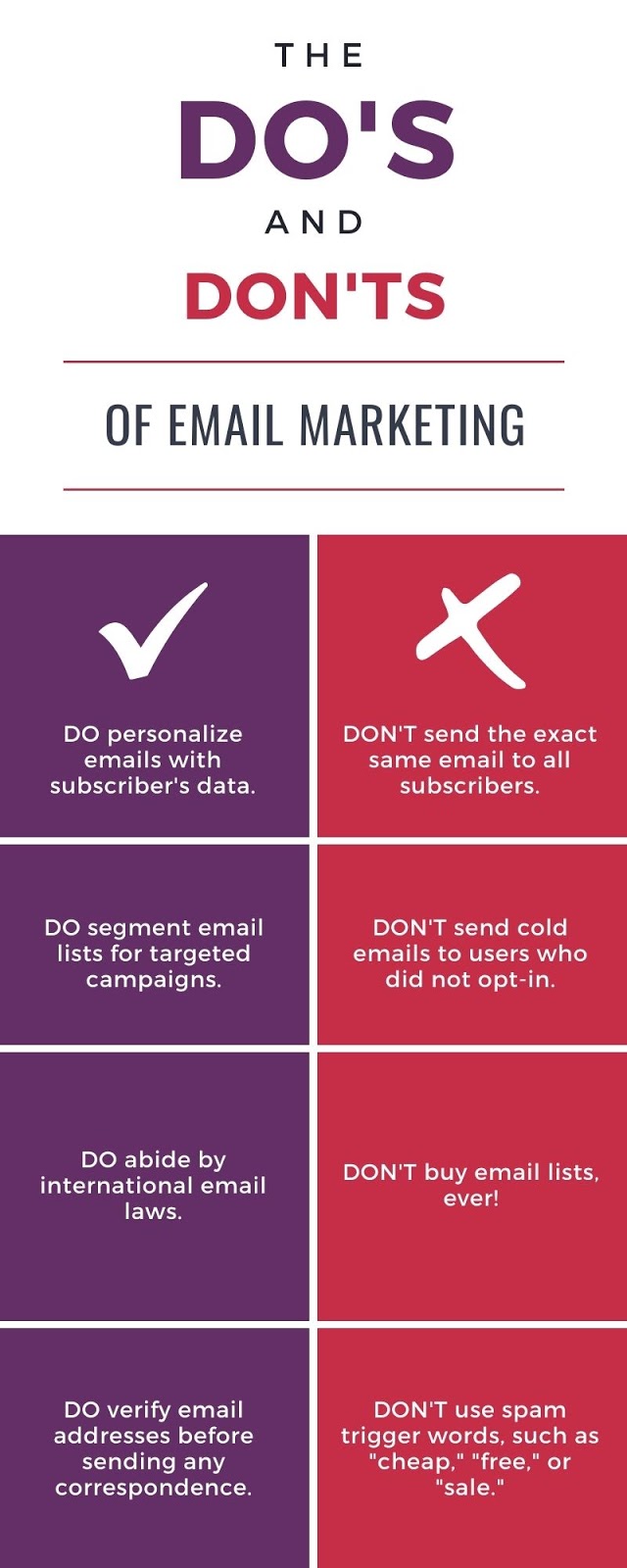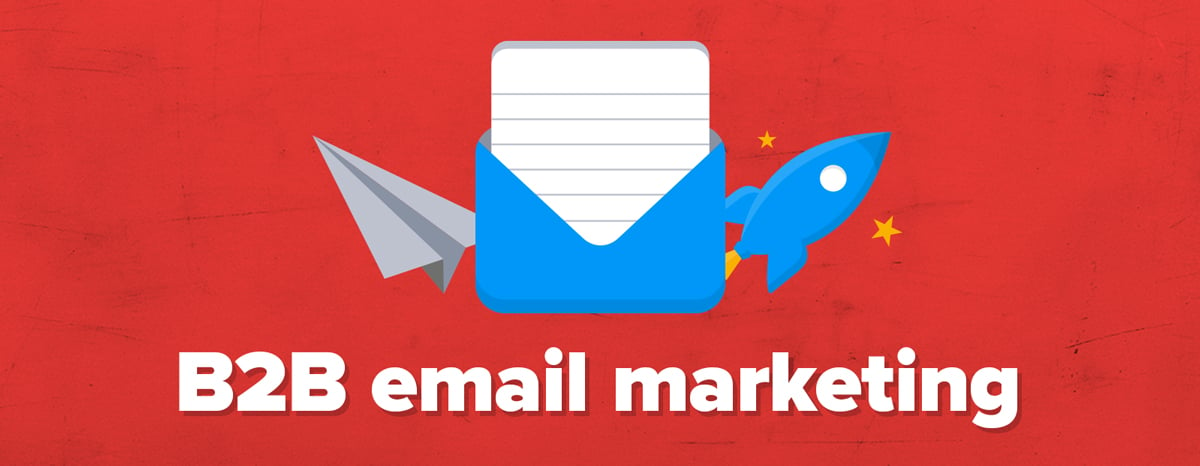Email marketing is often praised as a powerful tool for businesses. But is it always the best choice?
The truth is, email marketing has its drawbacks. In today’s digital age, many businesses rely heavily on email campaigns. Yet, not all find success. Some face issues like low open rates, spam filters, and customer fatigue. Email marketing can be tricky and sometimes ineffective.
Relying solely on it can lead to wasted resources and missed opportunities. Instead, businesses should explore other strategies that might better suit their goals and audience. This blog will delve into the reasons you might want to think twice before committing to email marketing. Understanding these pitfalls can help you make smarter decisions for your marketing efforts.

Credit: www.mailercloud.com
Introduction To Email Marketing
Email marketing has long been a staple in the digital marketing world. It involves sending emails to a group of people to promote products, services, or content. While it has its benefits, there are several reasons why you might want to reconsider using email marketing for your business. Let’s explore some of the key aspects of email marketing.
Brief History
Email marketing began in the late 1970s. Gary Thuerk, a marketer, sent the first mass email to 400 potential clients. This was the beginning of what we now know as email marketing. Over the years, it grew rapidly as businesses realized its potential. In the 1990s, with the advent of the internet, email marketing became more popular. Companies started using it to reach a larger audience and drive sales.
Common Uses
Email marketing is commonly used for:
- Newsletters: Regular updates about company news and events.
- Promotions: Special offers and discounts to attract customers.
- Product Announcements: Informing customers about new products or services.
- Customer Engagement: Building relationships through personalized content.
- Surveys and Feedback: Gathering customer opinions to improve services.
Despite these common uses, email marketing has its drawbacks. For example, many emails end up in spam folders. This means your message may never reach the intended recipient. Additionally, people often ignore or delete promotional emails without reading them. This can result in a low return on investment (ROI) for your email campaigns.
High Spam Rates
Email marketing might seem like a good idea. Yet, many emails end up in spam folders. This reduces your chance of reaching your audience. High spam rates can harm your marketing efforts. Let’s explore why.
Spam Filters
Spam filters are tough. They scan emails for certain words and phrases. If they find these, your email goes to spam. Even well-crafted emails can be flagged. This means fewer people see your message.
Some common triggers for spam filters include:
- Words like “free” or “discount.”
- All capital letters.
- Too many exclamation marks.
Most email providers use advanced filters. These make it hard for your emails to pass through. This can lower your email open rates.
User Perception
Users often see marketing emails as annoying. They get many emails each day. Too many emails can make users ignore them. This affects their perception of your brand.
Some common user reactions include:
- Deleting emails without opening them.
- Marking emails as spam.
- Unsubscribing from your list.
These actions hurt your email reputation. A bad reputation can lead to higher spam rates. It’s a cycle that’s hard to break.
Low Engagement Levels
Low engagement levels can be a significant drawback of email marketing. Many businesses face difficulties in capturing their audience’s attention. This can lead to disappointing results and wasted efforts.
Open Rates
Open rates often remain low. Many recipients ignore or delete marketing emails. This occurs even before reading the content. People receive countless emails daily. Your message can get lost in the clutter. This reduces the chance of engagement.
Click-through Rates
Click-through rates also tend to be low. Even if recipients open the email, they might not click on the links. Many users skim through without taking action. This lack of interaction can be frustrating. Your campaign may not yield the desired outcomes.

Credit: simplestrat.com
Deliverability Issues
Email marketing can be a powerful tool. Yet, it comes with challenges. One of the biggest issues is deliverability. This refers to whether your emails reach the inbox or not. Poor deliverability can ruin your efforts. Let’s explore some key problems related to deliverability.
Inbox Placement
Your email might not reach the main inbox. It could end up in the spam or promotions folder. Many factors affect inbox placement. Spam filters are strict. They check content, subject lines, and sender reputation. Even a small mistake can send your email to spam. This means your message gets ignored.
Bounce Rates
High bounce rates are another problem. A bounce happens when an email can’t be delivered. Bounces can be hard or soft. A hard bounce means the email address is invalid. A soft bounce is a temporary issue. High bounce rates hurt your reputation. Email providers may block you. Keeping a clean email list is crucial. Remove invalid addresses to reduce bounces.
Legal Compliance
Legal compliance is a significant concern for email marketers. Many laws and regulations govern the use of email marketing. These regulations exist to protect consumers’ privacy and prevent spam. Non-compliance can lead to hefty fines and damage your business’s reputation.
Can-spam Act
The CAN-SPAM Act is a U.S. law that sets the rules for commercial email. It gives recipients the right to stop emails from being sent to them. The law applies to all commercial messages, which the law defines as “any electronic mail message the primary purpose of which is the commercial advertisement or promotion of a commercial product or service.”
To comply, you must include a clear way for recipients to opt-out. You must honor opt-out requests promptly. Your emails must also include your physical postal address. Violating the CAN-SPAM Act can result in penalties of up to $43,792 per email.
Gdpr Regulations
The General Data Protection Regulation (GDPR) is a regulation in EU law on data protection and privacy. It also addresses the transfer of personal data outside the EU and EEA areas. GDPR is more stringent than the CAN-SPAM Act. It requires businesses to get explicit consent before sending emails.
GDPR also gives individuals the right to access the data collected about them. They can request the deletion of their data. Non-compliance can lead to fines up to 4% of your annual global turnover or €20 million, whichever is higher.
Reputation Damage
Email marketing can harm your brand’s reputation. It often does more harm than good. Your audience may perceive your messages as spam. This can lead to a loss of trust. Let’s dive into how email marketing can damage your reputation.
Brand Perception
Frequent emails can annoy your audience. They may start to dislike your brand. Each unwanted email can push them away. Your brand might get labeled as intrusive. This negative perception sticks. It can be hard to reverse.
Trust Issues
Unsolicited emails often raise trust issues. People may think your brand is not credible. Trust is hard to build but easy to lose. Once it’s gone, it’s tough to regain. Your audience may mark your emails as spam. This can damage your sender reputation. Future emails may go straight to spam folders. This affects your email deliverability.
Cost Considerations
Email marketing might seem cost-effective at first glance. Yet, there are many hidden expenses. These costs can add up quickly, affecting your budget. Understanding these costs is crucial before diving into email marketing.
Hidden Costs
Email marketing platforms often advertise low prices. But additional fees can surprise you. Costs for advanced features, templates, and automation tools can be high. These hidden costs can strain small businesses. Another hidden cost is the time investment. Crafting compelling emails takes effort. This time spent could be used elsewhere in your business.
Roi Challenges
Email marketing’s return on investment (ROI) can be unpredictable. Many factors affect the success of email campaigns. Open rates, click-through rates, and conversions can vary. Poorly performing campaigns can lead to wasted resources. Measuring ROI accurately requires advanced tools and skills. Small businesses may struggle to justify these expenses.

Credit: www.superoffice.com
Alternatives To Email Marketing
While email marketing can be effective, it might not suit every business. There are other ways to reach your audience without using email. Let’s explore some alternatives that can help you engage with your customers.
Social Media Marketing
Social media marketing allows you to connect with your audience directly. Platforms like Facebook, Instagram, and Twitter have millions of users. You can share content, run ads, and interact with followers in real-time. This method can increase brand awareness and drive traffic to your website.
Another benefit is the ability to target specific groups. You can reach people based on their interests, age, and location. This makes your marketing efforts more effective. Social media is also great for creating a community around your brand. People can share your posts, comment, and engage with your content.
Content Marketing
Content marketing involves creating valuable content for your audience. This can be blog posts, videos, or podcasts. The goal is to provide useful information that helps solve problems. High-quality content can attract visitors to your site and build trust with your brand.
Search engines also favor websites with strong content. This means you can improve your search engine ranking. Good content gets shared, which can bring more visitors to your site. It also keeps people on your site longer, increasing the chances they will become customers.
Frequently Asked Questions
What Are The Disadvantages Of Email Marketing?
Email marketing can lead to spam complaints. It often faces low engagement rates. Managing email lists can be time-consuming.
Is Email Marketing Cost-effective?
Email marketing can be costly due to software fees and design costs. It may not always yield high returns.
Can Email Marketing Damage Your Brand?
Yes, frequent emails can annoy subscribers. This can lead to negative brand perception and unsubscribes.
How Does Email Marketing Affect Deliverability?
Poor email marketing practices can result in low deliverability rates. Emails may end up in spam folders.
Conclusion
Email marketing has its drawbacks. It can be time-consuming and costly. Spam filters often block your messages. Recipients may ignore or delete emails. Personalization is challenging. GDPR compliance adds complexity. There are better alternatives. Social media, for example. Use content marketing or SEO.
Consider these options. They might suit your needs better. Evaluate your goals and audience. Choose the right strategy. Stay effective and efficient in your marketing efforts.


Leave a Reply